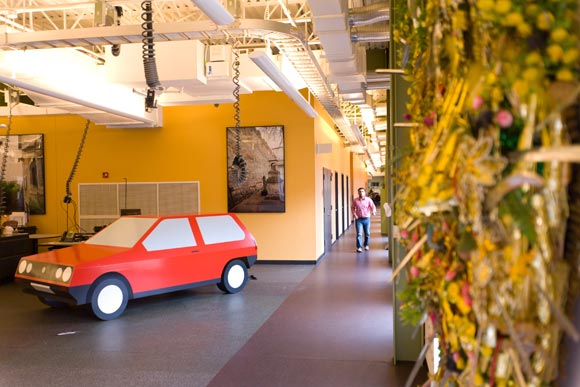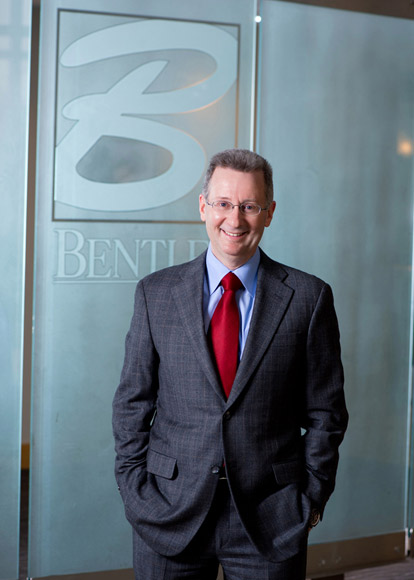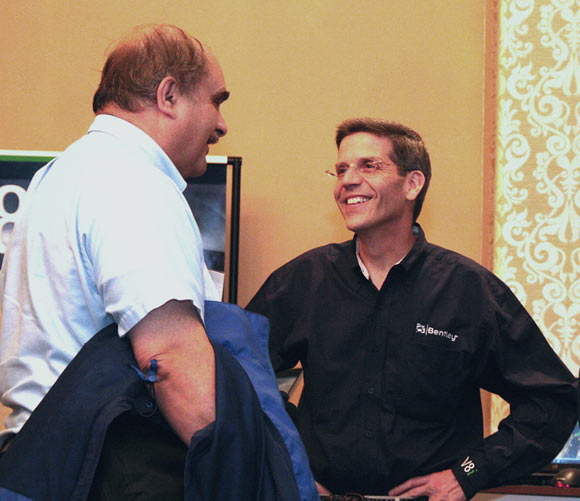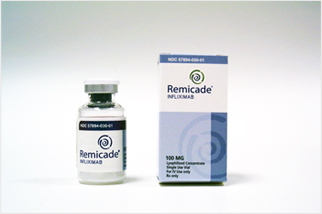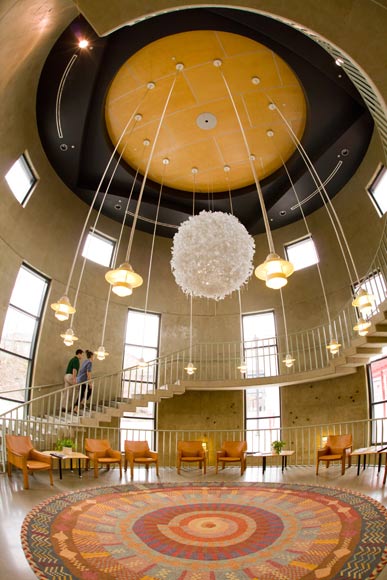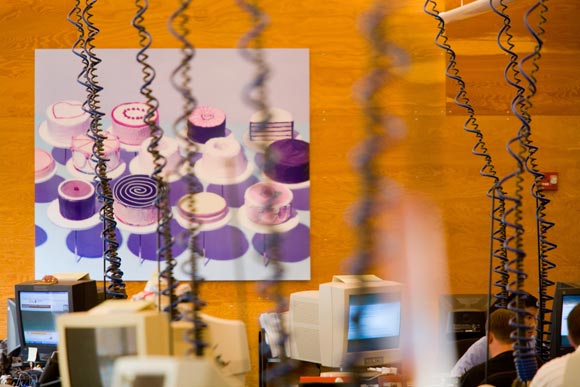The word “incubator” has come to mean something specific in the startup world — a place where companies grow, change and test viability. But when you look deeper at the metaphor, the moniker is even more apt. These companies, which are often little more than a good idea, are truly in their infancy. No matter how much potential they exhibit, they are vulnerable and green. Not all of them will survive.
On the Grid
The work of Bentley Systems literally surrounds us. The company creates design and engineering software for roads, bridges, power grids, utilities, buildings, railways and other pieces of the built environment. Their services carry infrastructure through its full life cycle — from initial 3-D modeling to ongoing enhancements.
To date, their subscription-based services are used in 169 counties, by 47 U.S. State Departments of Transportation and in several famous buildings, including the Gherkin in London.
“Before a building is built we can look at how it would behave in an earthquake or how its energy use performs,” says Chris Barron, vice president of corporate marketing for Bentley Systems. “There's a lot of intelligence inherent to what we're able to do with this software.”
When the company was founded in 1984, providing accessible software for the construction industry was groundbreaking. “In the past, you had to go through vaults of rolled up drawings that were probably inaccurate to begin with,” says Barron. “At that time, software was very expensive and only ran on very expensive computers. It was mostly hardware companies building the software.”
At inception, the company gained critical access to the Science Center's VAX (Virtual Address eXtension) computer, an early digital tool for 3-D modeling. With personal computers reaching the market, Barry Bentley and his brother Keith worked to develop PC-compatible modeling software. With this advancement, teams of thousands — from the architect to the subcontractors — could share planning information.
For most of their 29 years, Bentley Systems has had consistent annual revenue growth of around six percent, reaching $550 million in 2012. They have offices in 50 countries and over 3,000 employees, including 500 at their headquarters at Exton, PA. In May of 2012, they opened a Center City office with hopes of attracting graduating engineers from local universities.
As sustainability becomes a global issue — and energy and material costs rise — more clients are valuing lasting infrastructure, energy performance and clean utilities. To get ahead of these demands, Bentley has developed software to support point clouds, a laser device that scans a physical structure and renders a precise 3-D model. This allows the company to identify and improve structural challenges as infrastructure ages.
“The Bentley brothers were early in that (software transformation),” says Barron. “Many others were trying to do the same thing at the time, but we are one of the few that survived and thrived.”
Protein Boost
In 1979, Hubert Schoemaker, established Centocor (now Janssen Biotech), one of the first U. S. companies to produce biologics — medicines derived from human or animal proteins. This class of treatments, which includes vaccines and gene therapy, supports patients' existing immune systems. One medication can affect multiple diseases.
“Back in the day, it was ground-breaking science,” says Monica Neufang, a business unit communication leader for Janssen Biotech. “It's still a place where there's tremendous opportunity.”
In 1999, after the success of several of its treatments, Centocor merged with Ortho Biotech and was acquired by Johnson & Johnson. In 2011, it was renamed Janssen Biotech, and establised headquarters in Horsham, PA.
Remicade, one of Centocor's most notable inventions, was approved by the FDA in 1998 and went on to become one of the top selling biologics of all time. The drug was developed to treat rheumatoid arthritis but was discovered to alleviate the symptoms of Crohn's disease, ulcerative colitis and plaque psoriasis, among other conditions. Remicade has affected 1.8 million patients worldwide.
“Within one scientific discovery there are many indications” says Neufang. “It's not always about the new thing. It's also about making sure you have a full and well-thought-through life cycle.”
Today, Janssen Biotech employs 600 in the region and 3,400 across Pennsylvania. They have one of the largest treatment portfolios for immunology and oncology symptoms. They continue to expand their focus by integrating patient affordability programs into their business plans.
“When our [new treatments] are released we'll have a leg up in terms of how patients will have access to these medications,” Neufang says.
Automation Nation
The offices of SEI, a global financial firm, are not typical for a $1 billion company: the floors are open, the chairs and desks have wheels, and power cords come down from the ceiling. There are no administrative assistants, no executive washrooms or executive parking lots. Everyone — even the CEO — books their own appointments.
“You can plug in and move your desk according to your team,” says Dana Grosser, director of corporate public relations at SEI (originally an acronym for Simulated Environments Inc.). “There are no internal office walls, not even cubes — it's totally open. You can go up to people and have conversations.”
CEO Alfred West founded the company in 1968 while pursuing a PhD at the University of Pennsylvania. Decades before the personal computer, West had a vision to simplify tedious calculations through automated software. The company's flagship product simulated various scenarios affecting payback, down-payment and interest rates, evaluating and predicting how loans would perform over time.
“At that time, there wasn't anything like that from a bank standpoint,” says Grosser. “If someone had to transfer assets from one department to another, they filled out a slip and handed it to someone. That all had to be done manually. When [the founders] were able to get into the departments of banks — get into the trusts departments — and demonstrate this product, that was a real time of growth.”
SEI currently has 2,600 employees worldwide, with offices in England, Ireland, The Netherlands, Canada, South Africa, Hong Kong and Dubai, and 2,100 in Pennsylvania. Their latest product is a wealth management platform integrating a full range of transactions, including trust accounting and client acquisition.
In addition to creating ongoing software solutions, West continues to expand his personal collection of avant-garde art. It's on display at all locations — another thing that sets SEI's offices apart.
The University City Science Center has partnered with Flying Kite to showcase innovation in Greater Philadelphia through the “Inventing the Future” series.
DANA HENRY is Flying Kite's Innovation & Job News Editor.
